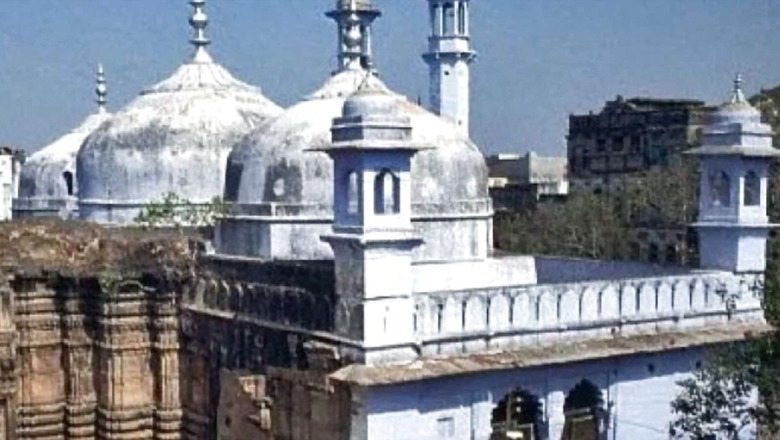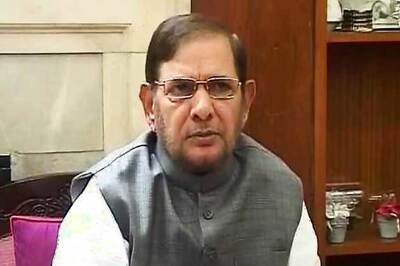
views
As the court-mandated videography survey of the Gyanvapi Masjid complex concluded on Monday, lawyer Vishnu Jain claimed “a big victory for Hindu side” and said that a ‘shivling’ was found inside the well used for ‘wuzu’. A detailed report of the survey will be submitted on Tuesday as per the instructions of the Varanasi Court.
Meanwhile, the Supreme Court will hear the petition challenging the survey on Tuesday.
The issue dates back to 1991 when a slew of petitions arrived before the Varanasi court, with local priests seeking permission to worship in the Gyanvapi Masjid area. The petitioners claimed that the Gyanvapi Masjid was built on orders of Mughal king Aurangzeb in the 17th century by removing a portion of the Kashi Vishwanath Mandir.
Here’s a timeline of the issue:
One of the petitioners — Vijay Shankar Rastogi, a lawyer from Varanasi — filed a plea in the lower court as the “next friend” of the Kashi Vishwanath Mandir’s presiding deity. In legal language, a “next friend” is someone who represents someone who is unable to represent themselves in court.
The petition was submitted in 1991 and Rastogi argued in his petition that Maharaja Vikramaditya built the temple where the current mosque stands roughly 2,050 years ago. He urged that the Gyanvapi mosque be demolished and that Hindus be granted ownership of the entire plot of land, as well as the right to worship inside the mosque.
Furthermore, the petitioner argued that because the Gyanvapi mosque was erected upon a partially ruined temple, the Places of Worship (Special Provisions) Act, 1991 did not apply.
Following the proceedings in 1997, a trial court in Varanasi ruled that the petitioners’ redress was restricted by the Places of Worship (Special Provisions) Act, 1991. Following that, revision petitions were filed, consolidated, and heard in Varanasi’s trial court, according to a report by Jagran Josh.
The AIM Committee filed a petition in the Allahabad High Court in 1998, claiming that the matter could not be resolved by a civil court and citing Section 4 of the Places of Worship (Special Provisions) Act, 1991. Following this, the Allahabad High Court issued a stay order on the civil court’s proceedings.
Prime Minister Narendra Modi lay the foundation stone for the Kashi Vishwanath temple corridor in March 2019. A contractor removed chabootra near gate number 4 of the Gyanvapi mosque as part of the corridor construction in October 2019, escalating communal tensions in the neighbourhood. The contractor, however, built the shattered building overnight after local Muslims protested, the report said.
Advocate Vijay Shankar Rastogi filed a new petition on behalf of the Swayambhu Jyotirlinga Bhagwan Vishweshwar seeking an archaeological assessment of the Gyanvapi mosque in December 2019, a month after the Supreme Court’s decision on the Babri Masjid-Ram Janmabhoomi controversy. He noted that in 1998, it was ordered to gather evidence from the entire Gyanvapi complex in order to determine the site’s religious character, but the Allahabad High Court postponed the lower court’s decision.
In the current case, Rakhi Singh, Laxmi Devi, Sita Sahu, Manju Vyas, and Rekha Pathak of Delhi had filed a lawsuit on April 18, 2021, seeking permission to worship and perform rituals at Shringar Gauri, Lord Ganesh, Lord Hanuman, and Nandi on a daily basis, as well as preventing opponents from damaging the statues.
Within the very sensitive Gyanvapi mosque’s exterior wall is a picture of Goddess Shringar Gauri. Regular access of devotees was stopped after the mosque’s security was tightened up following the demolition of the Babri mosque during the Ram Janmabhoomi movement, and worshipping this deity was only allowed on the fourth day of Chaitra Navratra.
In the Shringar Gauri worship case, the court of Civil Judge (Senior Division) of Varanasi, Ravi Kumar Diwakar, had on April 26, 2022 ordered videography by the advocate commissioner of the Shringar Gauri temple in the Kashi Vishwanath-Gyanvapi mosque complex and other places after Eid and before May 10.
The court had said that besides the advocate commissioner and parties, one associate can remain present during the proceedings.
The survey began on Saturday and covered a major part of the exercise on Sunday, covering all the three domes and main mosque area, where the namaz is performed.
On Monday, the third day, the detailing of the surveyed areas was done.
The Allahabad High Court has assembled to hear the petition of the Central Sunni Waqf Board and Intazamiya Committee. The High Court has been hearing the case since last year and the Muslim side has been demanding to quash the petition by the Hindu side in Varanasi court.
Meanwhile, two applications have also been filed in a Mathura court seeking appointment of an advocate commissioner to carry out an inspection of the Shahi Idgah Mosque adjoining Sri Krishna Janmabhoomi to confirm the existence of Hindu artefacts and ancient religious inscriptions on the mosque premises.
Read all the Latest India News here




















Comments
0 comment